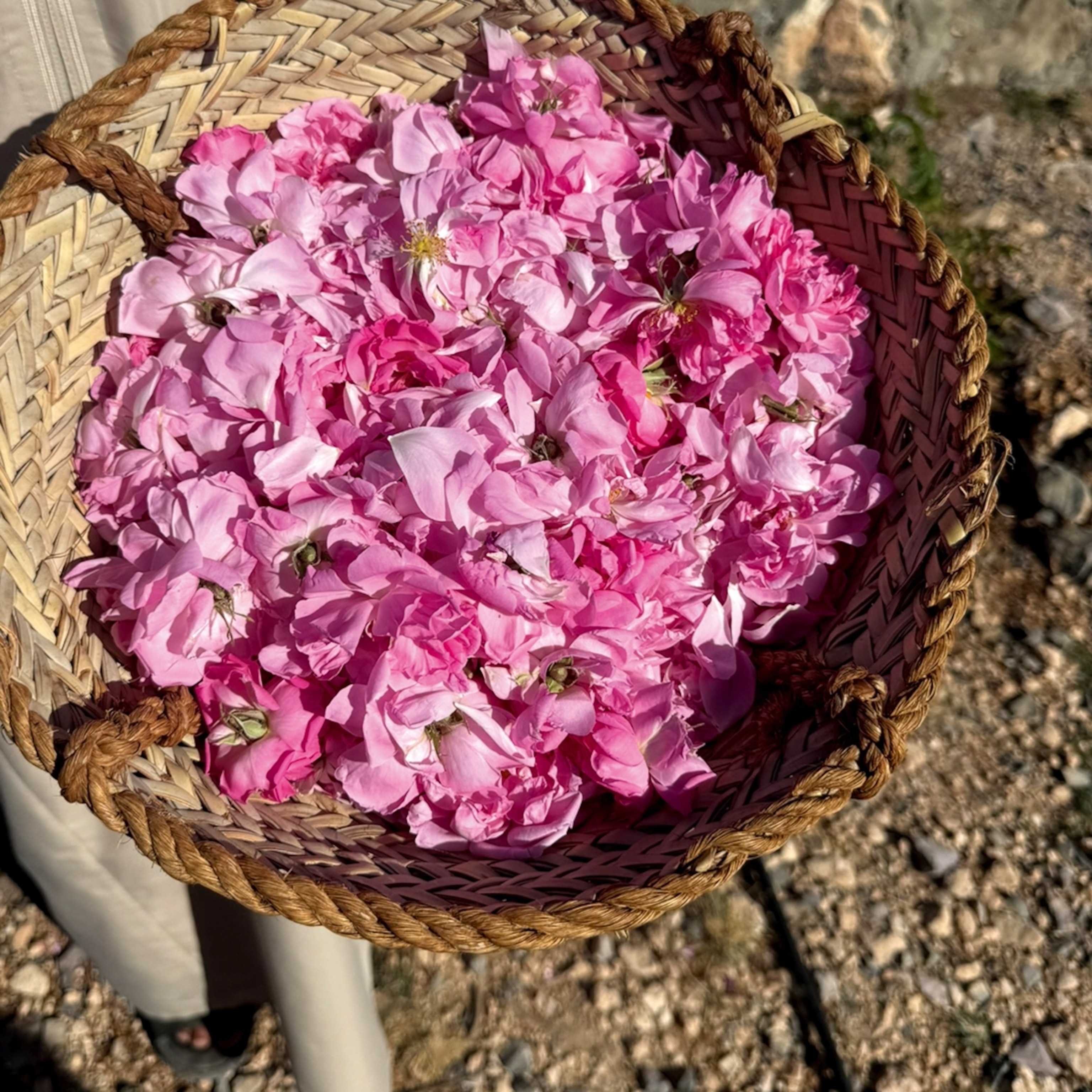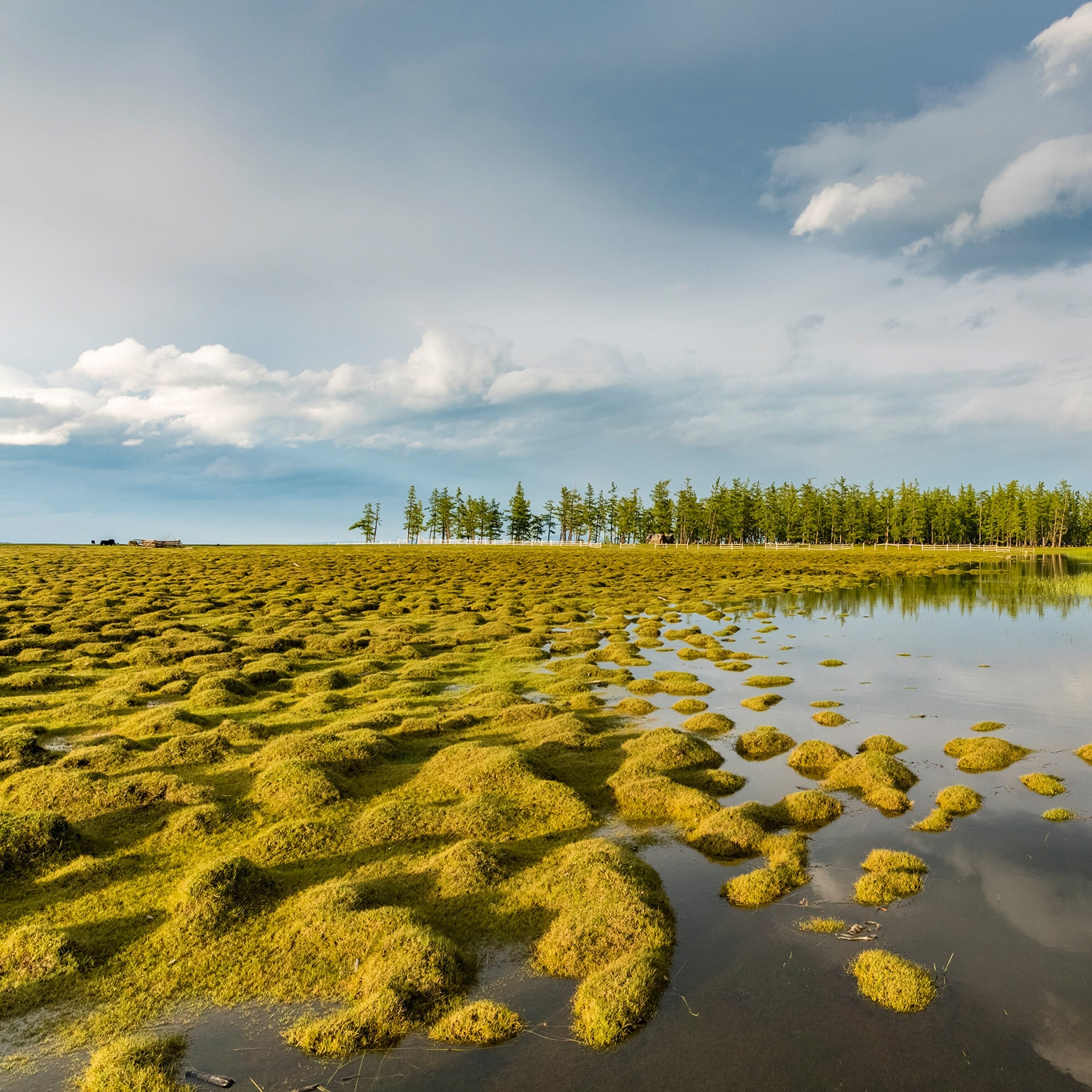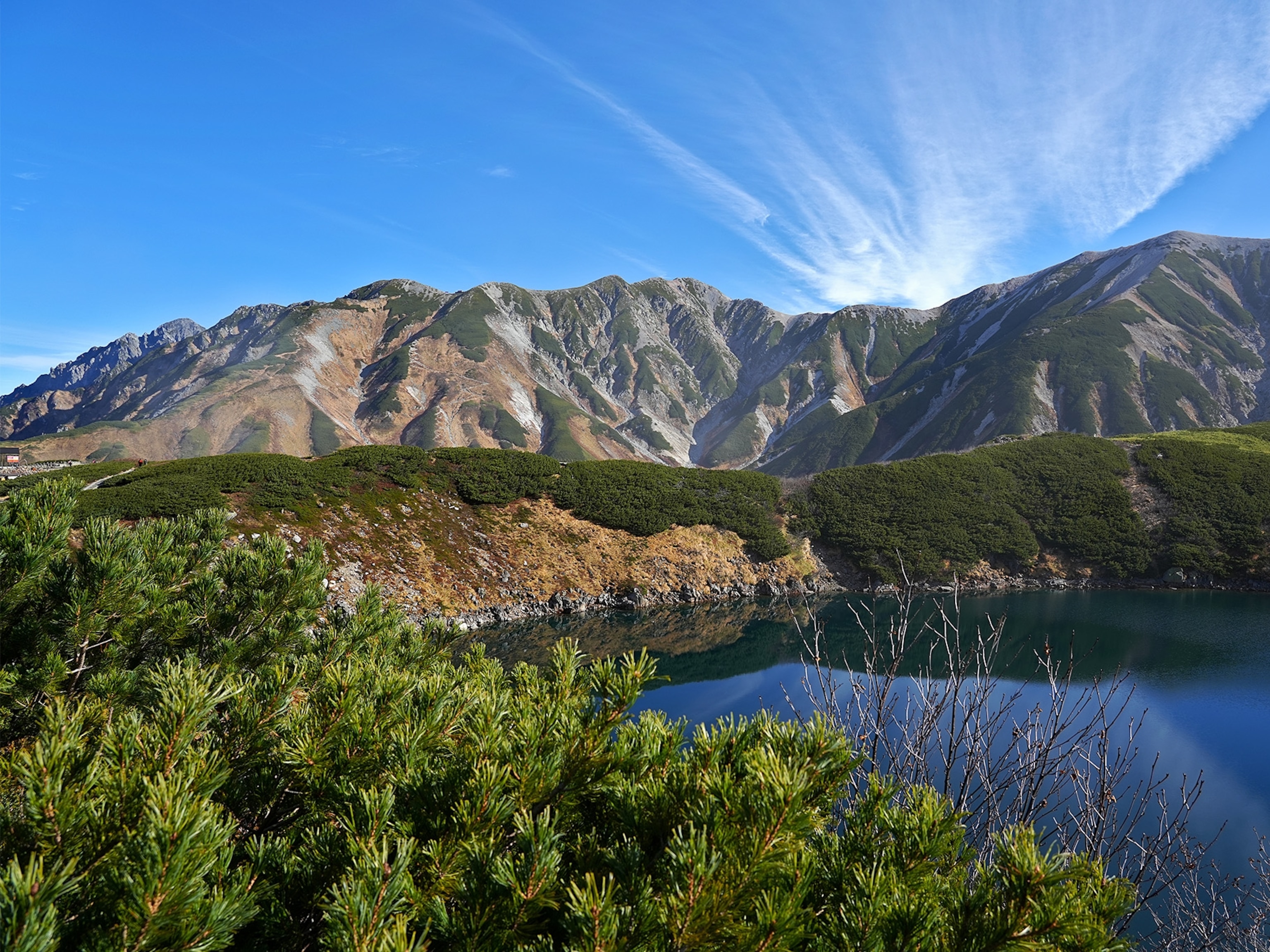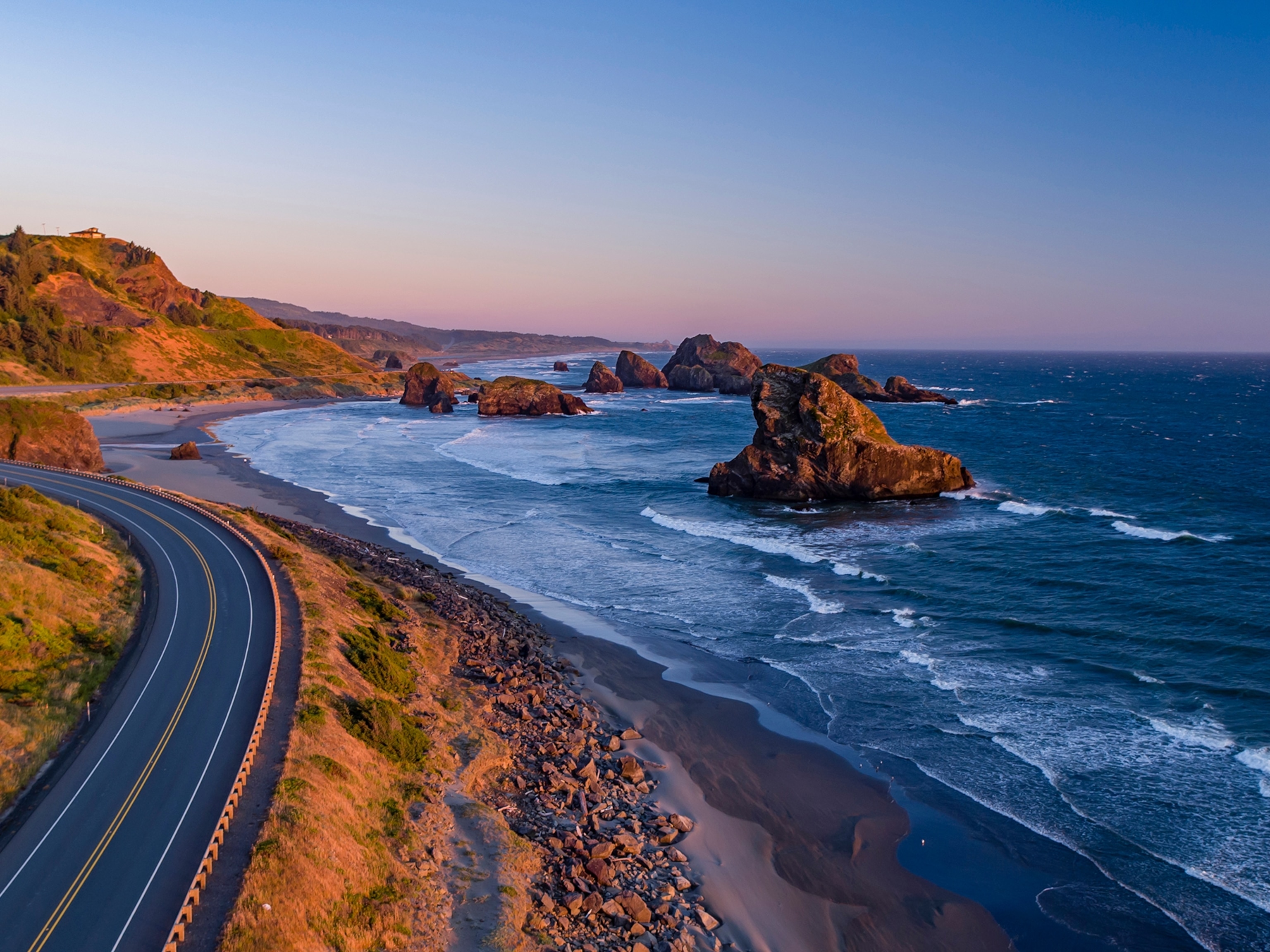
A wild journey through Oman, from epic mountain passes to remote storied islands
Once an important hub for Indian Ocean trade, Oman today may be considered unassuming but its history is etched into some of the Middle East’s wildest landscapes. A journey from Muscat through the Hajar Mountains and Musandam Peninsula reveals its charms, with canyons that rise to citadel mountains, and dhow-filled harbours leading to serrated shores.
The national emblem of Oman is the khanjar — a curved dagger, shaped roughly like the letter ‘J’. Khanjar are ubiquitous in Oman. They appear on the national flag, on police cars, banknotes and coins. Khanjar sculptures adorn roundabouts; depictions of khanjars have been engraved on Rolex watches. Not long ago, khanjars were emblazoned on the tailfins of Oman Air planes — until someone considered that perhaps knives and passenger jets do not mix. Around Oman, you can see khanjars being worn to occasions as diverse as weddings, funerals and job interviews — they stand for pride and purpose, an iron-clad adherence to tradition. For the better part of a millennia, these daggers were tools for camel husbandry and self-defence. In the present day they are a symbol of a country whose heritage cuts deeper than most along the Arabian Peninsula.
(Oman on four wheels: discover the ultimate coastal road trip itinerary)
And, as I look at it out of a plane window, it occurs to me that the shape of the country’s coastline also vaguely resembles a khanjar. The shoreline curves northward — at the sharp tip is the Musandam Peninsula, daggering deep into the Strait of Hormuz. The central spine is the Hajar Mountains. And, at the cutting edge, beaches blade into the blue waters of the Gulf of Oman. Nearing the hilt, my plane lands in the Omani capital Muscat — one of the most likeable capitals in the Middle East, sprawled along a coastline serrated by little coves.
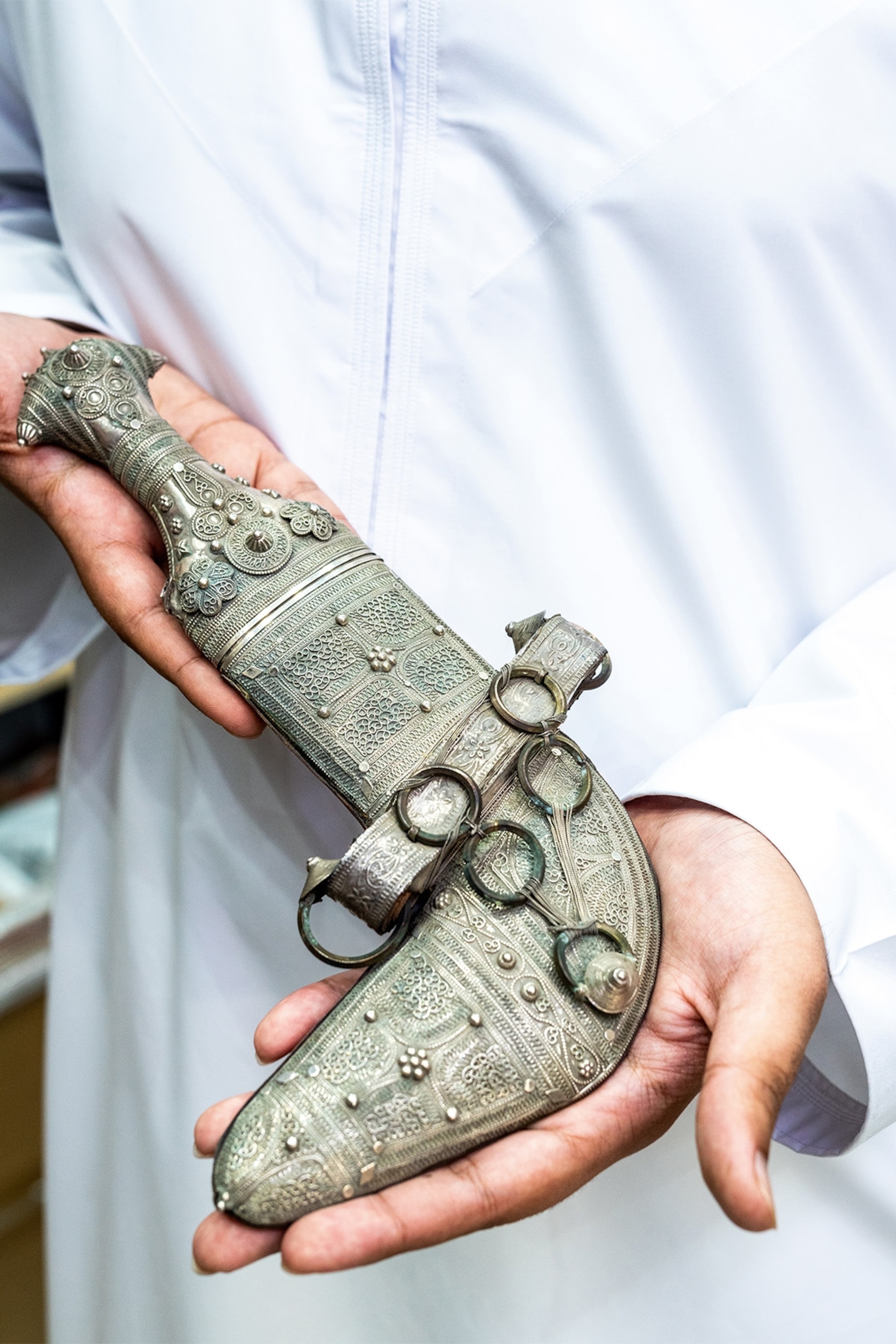
“When you wear a khanjar, it’s a way of showing that you mean business,” explains my guide, Khalid Mathrushi, who has just given his young son his first (small and blunt) khanjar. “People respect you: they take you seriously.”
I’m travelling around Oman on an itinerary organised by adventure tour operator Wild Frontiers, getting a sense of its history and landscapes by following the curve of its northern coast. In Muscat, the trip starts at Muttrah Fish Market. That morning’s catch is still twitching on the counters, the air is noisy with the clops of fishmongers’ knives, and giant tuna are shunted around in wheelbarrows. A delta of squid ink drains onto the floor, mingling with fish entrails. Very quickly you see Muscat is a town with saltwater in its blood.
The city was known to Ancient Greeks as ‘the hidden port’ — its old deep-water harbour concealed under the cliffs. It prospered from the 16th to the 19th centuries — firstly as a Portuguese foothold in Arabia, then as the capital of an Omani Empire that extended to Pakistan and Zanzibar. It was a hub for Indian Ocean trade: among the ships laying anchor here were Portuguese carracks ballasted with spice and gold, dhows carrying Chinese ceramics, and other vessels laden with Arabian frankincense, bound for churches and temples across the oceans. In the 20th century, Muscat lapsed into relative obscurity as ocean trade dwindled — only the occasional steamer stopped by, and the names of the few passing ships were inscribed on the harbour walls. In the 21st century, however, it’s prospering again, but remains fairly unassuming — without the showboating architecture of nearby Dubai or Abu Dhabi. It is a low-rise city, where your gaze instinctively wanders to the water.

Directly outside the fish market I find the Sultan of Oman’s two luxury yachts moored, their funnels painted with khanjar insignia. So, too, do khanjar medallions adorn the iron gates of the Al Alam Palace, a little further along the shore. The palace was remodelled by the father of the modern nation, Sultan Qaboos, who overthrew his father, Said bin Taimur, in a 1970 coup with the help of the British — bloodless, although his father accidentally shot himself in the foot with a pistol during the commotion, and lived out the rest of his days in London’s Dorchester Hotel. Sultan Qaboos went on to oversee the renaissance of Oman — oil money transformed the nation at lightning pace from a poor backwater to a prosperous, peaceful power in the easternmost nook of Arabia.
In a region famed for rulers with tyrannical inclinations, Sultan Qaboos loved Mozart and built a magnificent opera house. He passed away in 2020 to be succeeded by his cousin Sultan Haitham bin Tariq. But wherever you go in the country the twin portraits of these two rulers watch over you — each seated on a golden throne, each clutching a gilded khanjar.
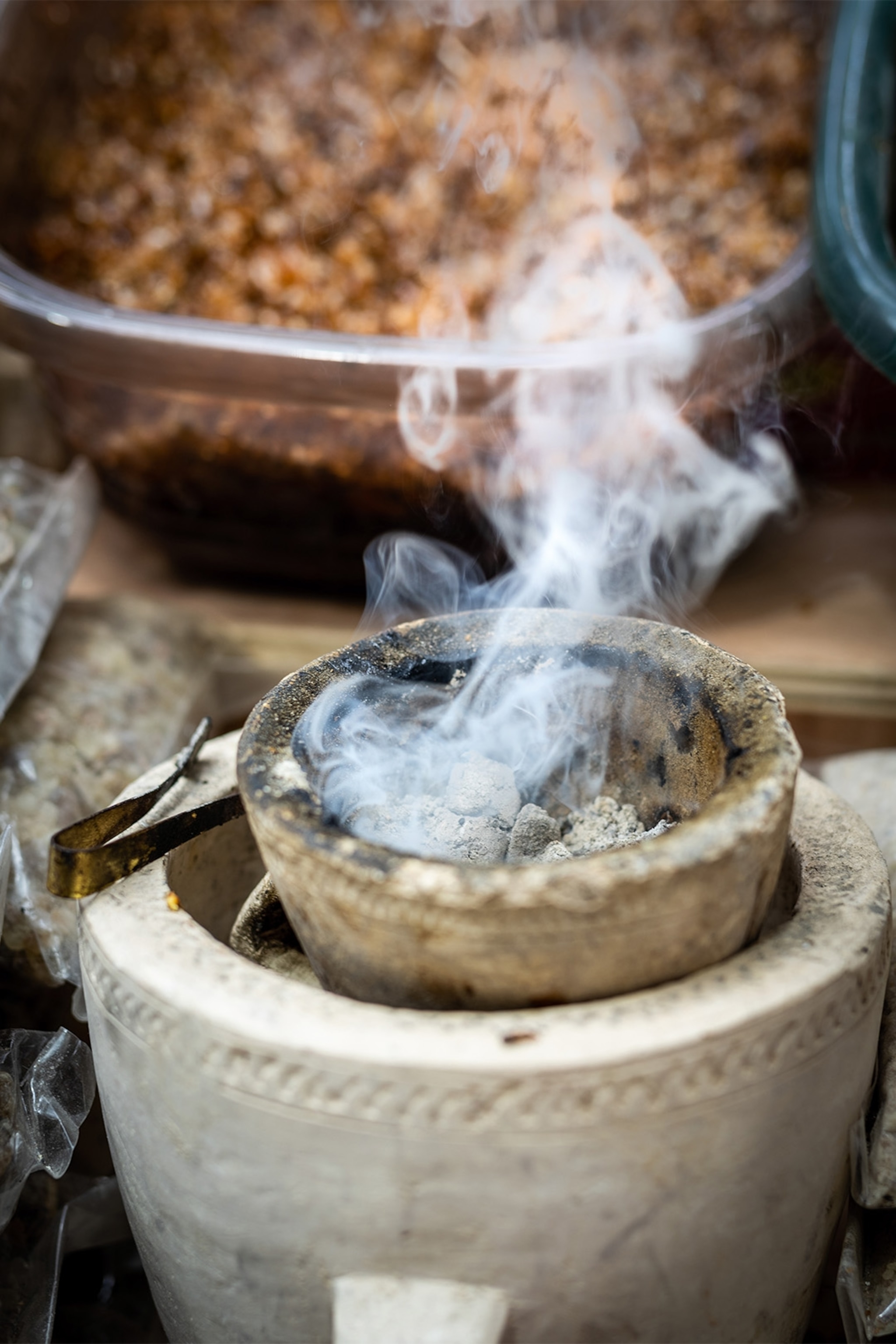
Lesser khanjars are for sale when I visit Muttrah Souk — a labyrinth of covered alleyways that burrows inland from the city’s corniche. Stepping inside, aromas of frankincense and rose water mingle with the musty scent of brass curios including telescopes and sextants (navigational tools) — some antique, some replicas made in China. Iron lanterns scatter latticed light over neatly folded pashminas.
Before I leave Muscat, I stop at the Sultan Qaboos Grand Mosque. The largest in the country, it opened in 2001 as a spiritual landmark of the national renaissance. Minarets rise over marble courtyards and pigeons coo under swooping arches. The prayer hall is cool and cavernous, built from materials sourced from across the globe: chandeliers made of Austrian crystals; teak from Myanmar; a carpet from Iran, crafted with 1.7 million knots. Umayyad-style arches recall the designs of Damascus and Cordoba, while blue tiles nod to the splendour of Istanbul and Isfahan. It’s a mosque for a capital that’s consciously gazing outward to the world, and is open to non-Muslims, too. “You can speak to god in any language,” says Sanima, the attendant in the mosque’s education centre, where I stop for dates and coffee. “He understands them all.”

Into the mountains
Modern Oman is criss-crossed by tarmac roads, traversed by multi-lane highways, flooded with cheap petrol and busy with imported Japanese cars. Yet at the heart of the nation is an immense mountain range that’s impregnable to even the best efforts of road builders. “This is a serious route,’’ says my driver, Nawaf Al Wahaibi, as we throttle up the dirt track into Wadi Bani Awf. “You have to drive it many times to master it. I don’t believe people will ever be able to lay tarmac here.”
Wadi Bani Awf is one of the valleys that trails into the heart of the Hajar Mountains. Clinging to its contours is our track — part thoroughfare, part roller coaster — often travelled on 4x4 sightseeing tours by people who come to marvel at the highland vistas and escape the lowland heat. Road signs sternly warn of the dangers of the route, which is accessible only to drivers with the nerves of an iron khanjar. Our 4x4 storms and slaloms up steep gradients. The engine heats up, the air thins and our ears pop. Sheer drops loom inches from the tyre treads. Eventually the view opens out into a vast panorama of rock: citadel mountains and canyons gouged deep into the earth. Birds of prey ride the thermals below. We are a world away from the coast.

Rising to 3,000m from the coastal plain, the Hajar Mountains were once a barrier — preserving ancient traditions, keeping outsiders away. In one sense this is the real Oman: until the 1970s, the country was known as ‘Muscat and Oman’ — the former stood for the cosmopolitan coastline, the latter referred to an interior of mountains and deserts, a terra incognita to the wider world. Only in recent decades have the tentacles of modern life extended to traditional mountain villages. Mains electricity now serves places once reached by shepherd’s trails. Villages where water was carried in goatskins now have modern plumbing. Concrete compounds are displacing cave homes. But the pass at Wadi Bani Awf retains part of its old wildness. Some days before, Nawaf had been driving this same route when a sudden thunderstorm flooded the canyons, washing away concrete bridges and uprooting the date palms. He drove as fast as he could up the mountain and narrowly escaped the deluge.
Further into the pass we come to Bilad Sayt, a mountain village where flowering gardens of palms and bananas punctuate the parched expanse of the hills. Rising over this little oasis is a miniature castle — one of a great many guarding the passes of the Hajars, and a key draw for visitors here.
Not far from the mouth of Wadi Bani Awf is the behemoth of Nakhal Fort, its turrets linked by rambling stairways and topped with iron cannons that are white-hot to the touch in the midday sunshine. There are more — Nizwa with its hulking keep, Al Hazm with its three-metre-thick walls. Their towers are aligned to catch soothing breezes and their gatehouses designed so cauldrons of boiling honey could be tipped on assailants from above. Oman’s castle-building frenzy peaked in the 17th and 18th centuries, when the country was a patchwork of competing dynasties. The most famous have been restored — in some instances it seems like the last workmen only downed tools yesterday. But more evocative are the ruined watchtowers, solitary and sentry-less, with sparrows nesting in their crevices. Crumbling ramparts stretch up and down mountains. It can often be hard to guess what they might have been defending, or indeed against whom.
Eventually we reach the top of the pass. The afternoon call to prayer drifts from a mosque somewhere down in the haze below. Other 4x4s swoop along the track, dwarfed by the plumes of dust rising in their wake — clouds that billow like peacocks’ tails, or something released with the rub of a lamp.From up in the mountains, all of Arabia seems to unfurl beneath our feet: to the north is the sea, running to the Indian Ocean in the east. Out of sight to the south is the Empty Quarter — a vast expanse of sand, where dunes roll to the Saudi Arabian border. And to the west, the blade of the dagger continues on its upward swoop, culminating at the Musandam Peninsula.

Onto the water
The sea is still as our dhow hauls out of Khasab harbour for the day: a mirror to a cloudless morning sky. Oystercatchers flit along the shore. Shallow waves slip from our wake. I sit on the deck, under a hessian shade strung from the mast, feeling the chug of the engine beneath a thick Persian rug while scanning the water for movement under its surface. It’s not long before a presence is ghosting about under the hull. Suddenly a bottlenose dolphin torpedoes through the water, emerging in a blossom of surf. For a while, a pod races our boat — all eyes on board are fixed on their acrobatics as they arch through the spray. Only when they disappear are we able to look up and fully take in the drama of our position. Musandam is where the Western Hajar Mountains rise sheer out of the turquoise depths of the Gulf. Here, long inlets — known as ‘khors’ — lunge deep among high peaks. It’s an absolutely extraordinary collision of land and sea, where the saltwater and reef abruptly turn to summit and mountain ridge.
The Musandam Peninsula is undeniably spectacular. But it’s also a chokepoint on what may be the world’s most strategically important waterway. Around 25% of all crude oil in the world is exported through the 25-mile-wide aperture of the Strait of Hormuz. Squint from the shore and you can make out a fleet of supertankers inching along the horizon between here and Iran — shuttling to the ports of Kuwait, Saudi, UAE, Bahrain and Qatar. Oil has brought extraordinary wealth to this waterway. Plate-glass skyscrapers and luxurious hotels have sprung up along the shores. And yet, any sailor on a southbound tanker will see a landscape almost wholly unchanged by the passage of time.

Our dhow chugs past fishing villages, the minarets of their mosques tiny and needle-like against the cliffs that rise above. Here and there are traditional lock-houses — subterranean homes with intricate bolts, designed so villagers could secure their waterside winter properties and take their goats to summer pastures. Many settlements along Musandam remain accessible only by sea. At the furthest tip is Kumzar, a village where residents speak a language that blends Farsi, Urdu, Arabic, English and Portuguese — a stew of vocabulary inherited from passing seafarers, centuries ago. In more ways than one, these remote khors have been a sanctuary: historians have debated whether the people of Musandam could be descended from the original inhabitants of Arabia — who ruled over the region before being displaced by the Arabs. This is also one of the last redoubts of the Arabian leopard, though it has not been seen in many years.
Though Musandam is a peninsula, it might be better considered an island — it’s technically an exclave of Oman, separated from the rest of the country by a narrow strip of UAE territory. The peninsula was still free of tarmac as late as the 1990s — Haneef first came here as a truck driver in the 1980s, steering lorries over gravel roads. At sea level, the temperatures routinely soar in excess of 40C, but Haneef remembers blizzards on the high mountain passes — he knew from driving on sand to drop his tyre pressure to get through the snowdrifts.
“They call these the Norwegian fjords of Arabia,” says Haneef Bekalam, one of the crew on the dhow. “Sometimes they look as if an artist painted them.”
The Norwegian fjords are a useful analogy for the geography here. But where the fjords of northern Europe have been formed by retreating glaciers, the khors of Musandam are the result of tectonic shifts — the Arabian plate being subducted by the Eurasian plate. The mountains are slowly submerging into the sea — shrinking a little more every year. “Perhaps it means one day there will be no Musandam,” says Haneef. “Maybe now is a good time to come here.”
Our dhow lays anchor beside the islet of Jazirat al Maqlab, also known by the English name Telegraph Island, where a sea-urchin-encrusted flight of steps leads out of the shallows. I follow it to find foundations of old buildings baking in the midday sun. There is little to see; only a solitary tree casts a sliver of shade.
Telegraph Island feels far from anywhere, and yet this was once one of the most important locations in the British Empire. In the mid-19th century, it was home to a repeater station on the telegraph cable that ran from London to Karachi. Orders governing the world’s largest empire were relayed through this lonely plot on an Arabian fjord. But things did not go to plan: molluscs chewed into the cables and locals menaced British interlopers from the mainland. The heat and boredom sent operators to insanity and worse. Two members of staff lost their lives. But the island, barely bigger than a football pitch, made its own contribution to our language — to make the circuitous trip down the khor and around the Strait of Hormuz was to go, in a literal sense, ‘round the bend’.
Today Telegraph Island still might trigger another kind of delirium — a mad infatuation with the surreal beauty of Musandam. I dive into the shallows as a silvery school of mackerel flashes past. Below me are angelfish, above are the dramatic heights of the mountains, themselves formed aeons ago from an oceanic crust, with fossils of fish bones found on the summits. Above and below the water, there is a sensation of wide-open space. The Arabian Peninsula is a region beset by conflict, obstructed by travel restrictions, fringed by futuristic cities and lavished with shopping malls. In this context, roaming Oman’s natural landscapes is an experience both precious and rare.
At sunset, I drive the tracks up to the highest point of Musandam. Down below there are countless vessels, including dhows and trawlers — the modern inheritors of an Omani seafaring tradition that dates back to legends of Sinbad the Sailor and Bronze Age boats sealed with bitumen. A blood-red sun lingers on the mountaintops, long after the land below becomes bathed in shadows and cools. It departs with a final flash: like the glint of a blade before it’s sheathed.

When to go to Oman
Peak season in Oman is between October and March, when temperatures dip to between 18C and 30C (though it’s often much cooler in the Hajar Mountains).
Shoulder seasons in September and April can yield good deals but temperatures rise to an average of around 36C in September.
Where to stay in Oman
Atana Musandam Resort. Doubles from 40 OMR (£85), B&B.
Sama Hotel Jabal Akhdar. Doubles from 45 OMR (£93), B&B.
How to do it
Wild Frontiers’ nine-day Northern Oman: Wadis, Mountains and Coasts group tour takes in Muscat, Wadi Bani Awf, castles and more, with possible extensions to Musandam.
Prices start from £3,460 per person, including accommodation, most meals, guided excursions and transfers, but excluding international flights.
experienceoman.om
Lonely Planet Oman, UAE & Arabian Peninsula. RRP: £19.99
Getting there and around
Oman Air operates daily direct flights between Heathrow and Muscat.
Average flight time: 7h.
Oman doesn’t have a railway network, but there are comfortable, long-distance buses that run between major urban centres. The Musandam Peninsula is an exclave of Oman in the north — separated from the bulk of the country by the UAE — meaning that many people prefer to avoid the admin of crossing two borders by instead taking an hour-long flight from Muscat to Khasab with Oman Air. There are plans for an integrated bus and ferry route from Muscat to Khasab, avoiding the UAE, launching in August 2023.
This story was created with the support of Wild Frontiers and Oman Air.
To subscribe to National Geographic Traveller (UK) magazine click here. (Available in select countries only).
